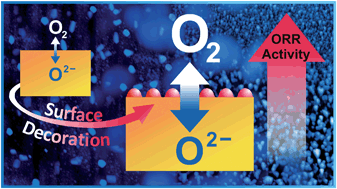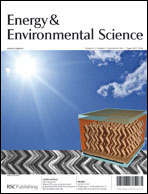Surface-decoration of perovskites can strongly affect the oxygen reduction activity, and therefore is a new and promising approach to improve SOFC cathode materials. In this study, we demonstrate that a small amount of secondary phase on a (001) La0.8Sr0.2CoO3−δ (LSC) surface can either significantly activate or passivate the electrode. LSC (001) microelectrodes prepared by pulsed laser deposition on a (001)-oriented yttria-stabilized zirconia (YSZ) substrate were decorated with La-, Co-, and Sr-(hydr)oxides/carbonates. “Sr”-decoration with nanoparticle coverage in the range from 50% to 80% of the LSC surface enhanced the surface exchange coefficient, kq, by an order of magnitude while “La”-decoration and “Co”-decoration led to no change and reduction in kq, respectively. Although the physical origin for the enhancement is not fully understood, results from atomic force microscopy, X-ray diffraction, and X-ray photoelectron spectroscopy suggest that the observed kq enhancement for “Sr”-decorated surfaces can be attributed largely to catalytically active interface regions between surface Sr-enriched particles and the LSC surface.

You have access to this article
 Please wait while we load your content...
Something went wrong. Try again?
Please wait while we load your content...
Something went wrong. Try again?


 Please wait while we load your content...
Please wait while we load your content...